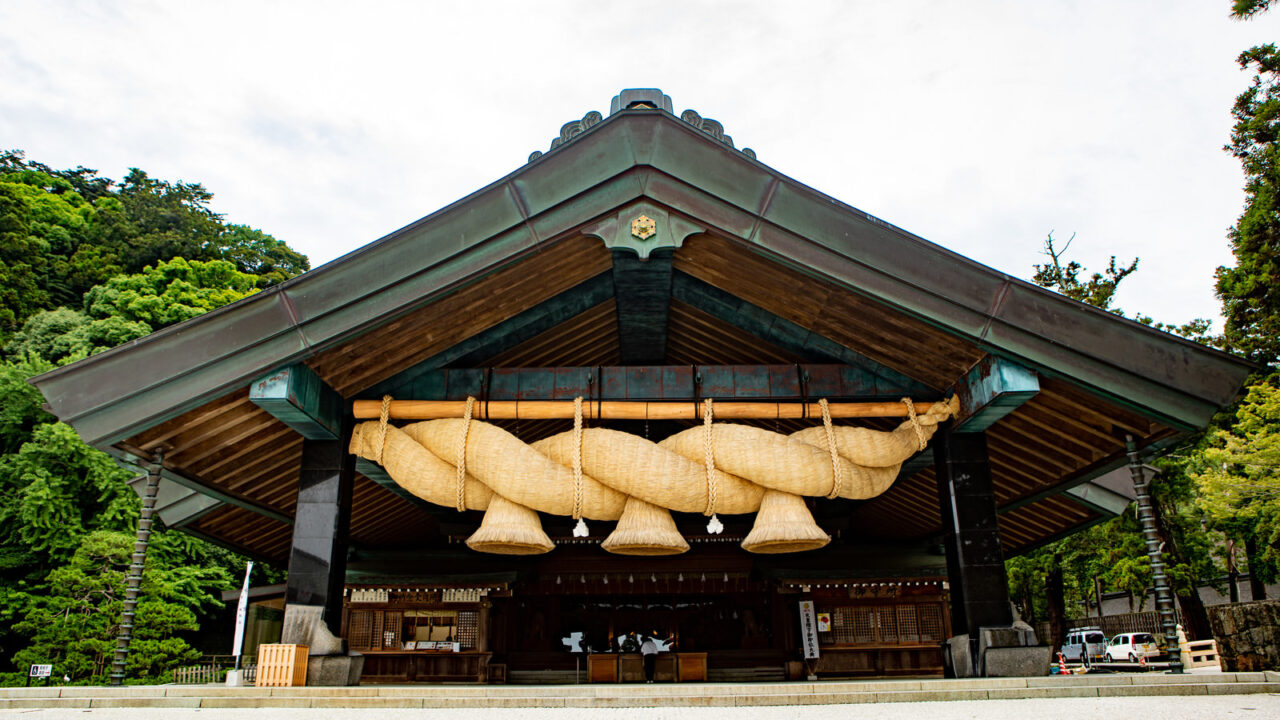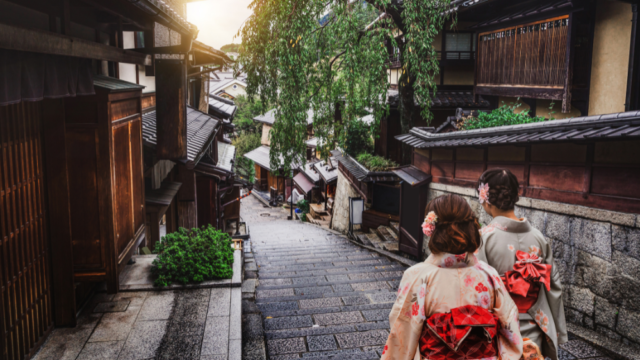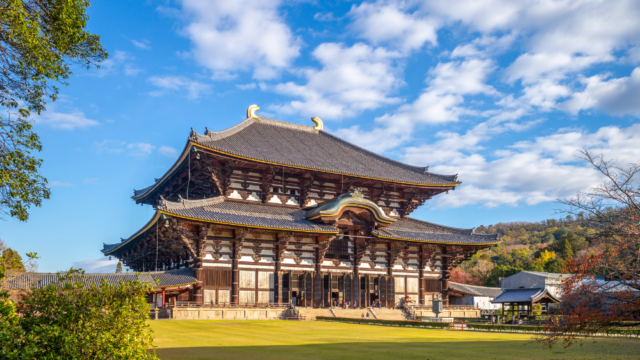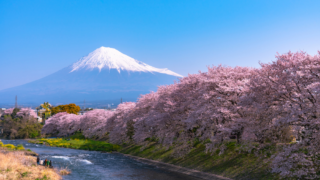Shinto shrines in Japan are sacred places where Shinto deities are enshrined, and religious ceremonies and festivals are held. There are approximately 80,000 shrines nationwide, each with its unique history and culture. Visitors come to these shrines to pray for peace and good fortune. In this article, I would like to introduce five famous shrines.
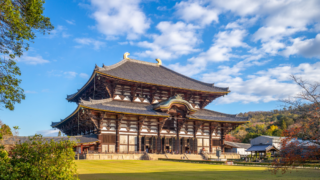
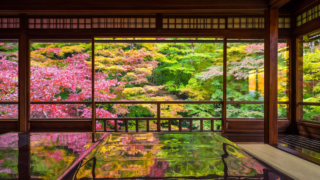
Ise Jingu
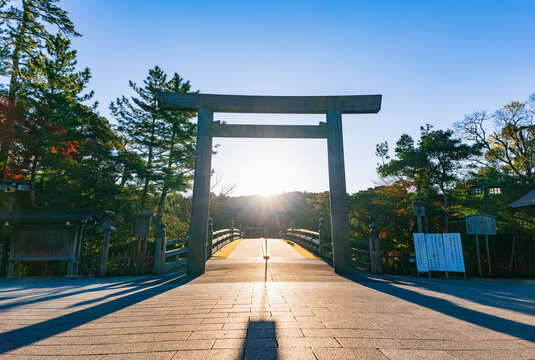 Ise Jingu
Ise JinguIse Jingu is known as the most prestigious shrine among the approximately 80,000 shrines across Japan. It is affectionately referred to as “O-Ise-san” and is considered the spiritual home of the Japanese people.
History and Origin
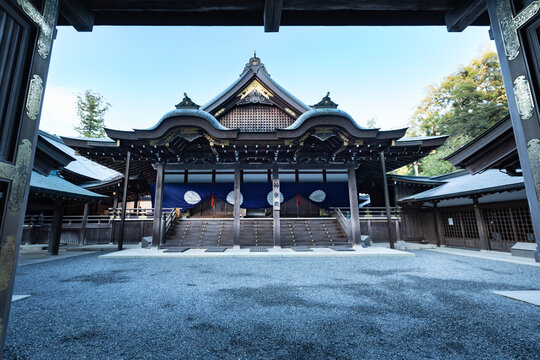 Ise Jingu
Ise JinguThe main deity of Ise Jingu is Amaterasu Omikami, who is regarded as the sun goddess and the central deity among the eight million gods. Around 2,000 years ago, Princess Yamatohime-no-Mikoto, who was searching for a place to enshrine Amaterasu Omikami, received a divine message to build the Inner Shrine (Naiku) by the Isuzu River, marking the origin of Ise Jingu. Ise Jingu consists of the Inner Shrine (Kotai Jingu) and the Outer Shrine (Geku), along with a total of 125 shrines.
Highlights
- Inner Shrine (Kotai Jingu): Dedicated to Amaterasu Omikami, the Inner Shrine is considered the most sacred place for the Japanese people. Walking through the forest of the Inner Shrine, visitors can experience a sense of awe and tranquility, as if their hearts are being purified.
- Outer Shrine (Geku): The Outer Shrine, dedicated to Toyouke Omikami, the deity of food, clothing, and shelter, is second in importance to the Inner Shrine. It is located a short distance away from the Inner Shrine, offering a contrasting experience.
Okage Yokocho
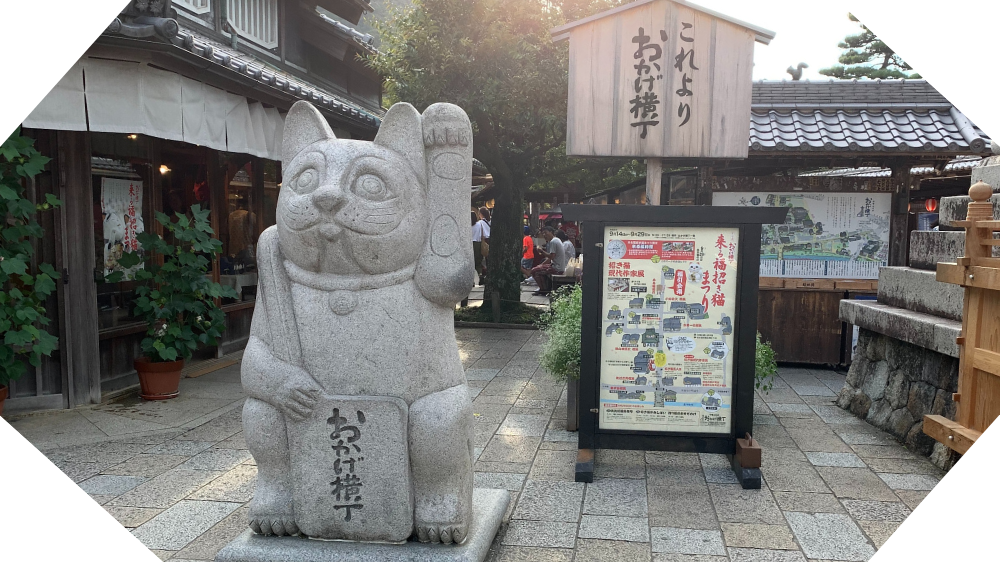 Oharai Yokocho is a shopping street near Ise Grand Shrine.
Oharai Yokocho is a shopping street near Ise Grand Shrine.Located in the town in front of the Inner Shrine, Okage Yokocho features relocated and recreated representative buildings from the Ise region. This area condenses the charm of the region, allowing visitors to experience the traditional tastes, specialties, history, customs, and warm-heartedness of Mie all at once. The lively atmosphere, reminiscent of a daily festival, combined with a nostalgic and leisurely pace, creates a relaxing environment.
In Okage Yokocho, visitors can purchase local specialties and traditional crafts, as well as enjoy famous dishes such as Ise udon and Akafuku mochi. Various events are held throughout the year, offering new discoveries with each visit.
Visiting Ise Jingu and Okage Yokocho provides a deep understanding of Japanese tradition and culture, as well as a sense of peace and tranquility.
Izumo Taisha
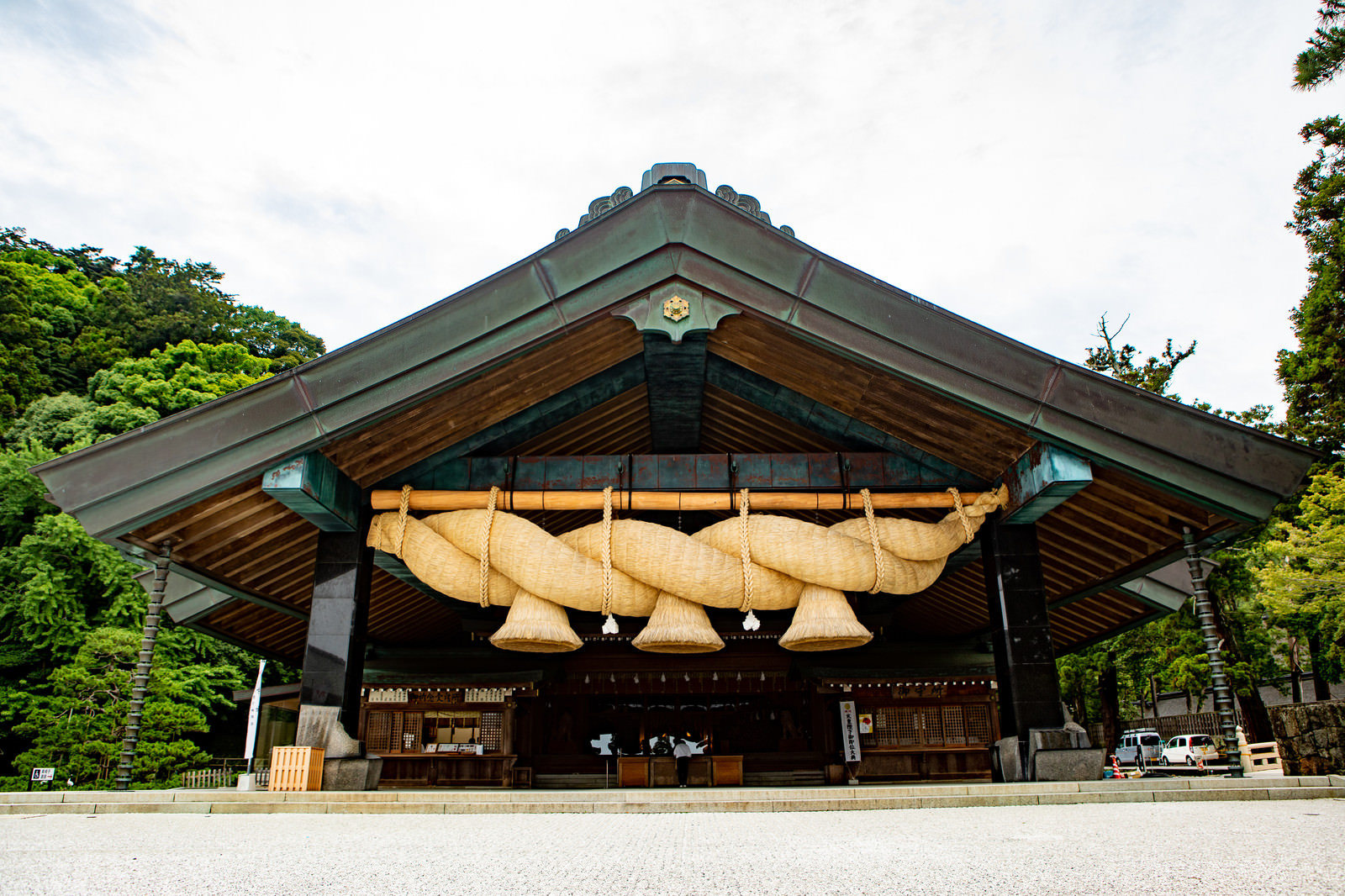 Izumo Taisha
Izumo TaishaIzumo Taisha is known as a grand shrine where gods gather. Located in the land of Izumo, known as the country of the gods, it stands as a symbol of the area. The precincts, backed by Mt. Yakumo, are filled with a solemn atmosphere, and the ancient shrine, with its thousands of years of history, stands majestically. Gazing up at the chigi (forked finials) on the roof of the main hall that seem to pierce the sky, it is easy to imagine the grand world of ancient myths.
History and Origin
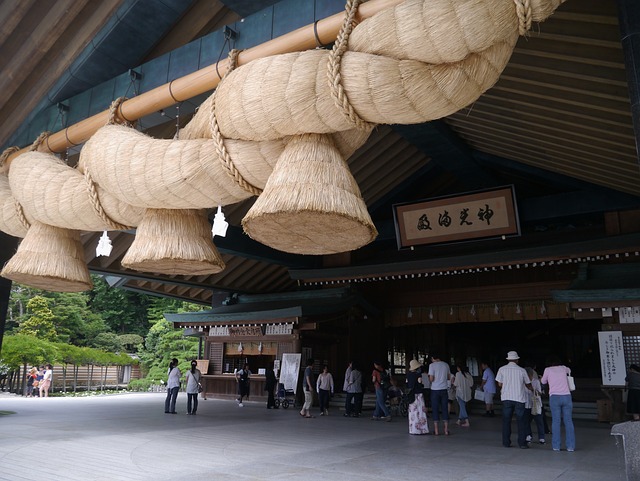 Izumo Taisha
Izumo TaishaIzumo Taisha is a representative tourist attraction in Shimane Prefecture and is considered a sacred place for matchmaking. The main deity enshrined at Izumo Taisha is Okuninushi-no-Okami, known from the myth of the “White Rabbit of Inaba.” He is widely revered as the god of matchmaking and is also known as the god of nation-building, who connects many people’s fates.
Highlights
- Main Hall: The main hall of Izumo Taisha adopts the Taisha-zukuri, one of Japan’s oldest architectural styles. The 24-meter-high main hall is both majestic and sacred, leaving a powerful impression on visitors.
- Kaguraden: The Kaguraden, known for its giant shimenawa (sacred straw rope), is a place where sacred dances are performed, allowing visitors to experience a holy atmosphere.
Other Attractions
- Great Torii Gate: The large torii gate at the entrance of the precincts symbolizes the beginning of the journey to Izumo Taisha. Passing through this gate, visitors are led into a sacred space.
- Worship of the Main Hall: By walking around to the back of the main hall and worshipping from all four sides, visitors can show their respect to the gods.
Visiting Izumo Taisha offers an opportunity to connect with Japanese mythology and history, providing a deeply soothing experience for both body and soul.
Kiyomizu-dera
 Kiyomizu temple
Kiyomizu templeKiyomizu-dera is a treasure trove of national treasures and important cultural properties, offering beautiful natural scenery as well. It is also known as a power spot for blessings such as success in love and longevity. It is one of the must-visit spots in Kyoto, surrounded by many attractive shops and historic temples and shrines where you can enjoy Kyoto’s unique cuisine.
History and Origin
 Kiyomizu temple
Kiyomizu templeKiyomizu-dera was founded in 778 and has a historical background where mountain worship and Buddhism merged. The name “Kiyomizu” (meaning “pure water”) comes from the clear spring water that flows within the temple grounds. This water, known as “Otowa no Taki,” is believed to purify and heal those who visit.
Highlights
- Kiyomizu Stage: The most famous spot at Kiyomizu-dera is the “Kiyomizu Stage,” which juts out from the main hall, a national treasure, at a height of about 13 meters. The stage is supported by 18 pillars made of 400-year-old zelkova trees, constructed using a method called “tsugite” without using a single nail. From this stage, you can enjoy breathtaking views of the seasonal landscapes.
- Otowa no Taki: The spring water that gives Kiyomizu-dera its name flows from Otowa no Taki, a beautiful waterfall divided into three streams, each believed to grant a different benefit: academic success, romantic fulfillment, and longevity. Visitors drink from these streams to make a wish.
Other Attractions
- Three-story Pagoda: The three-story pagoda in the temple grounds is strikingly beautiful with its vivid vermilion color, harmonizing with the Kyoto skyline. It is also designated as an important cultural property and is well worth a visit.
- Jishu Shrine: Located within the grounds of Kiyomizu-dera, Jishu Shrine is known for its god of matchmaking. Many couples and people seeking love visit the shrine. Inside the shrine, there are two stones known as the “Love Fortune-telling Stones.” It is said that if you can walk from one stone to the other with your eyes closed, your romantic wish will come true.
Visiting Kiyomizu-dera allows you to experience traditional Japanese architectural techniques, natural beauty, and deep history and faith. Combined with visits to other famous Kyoto sites, it will provide a more fulfilling sightseeing experience.
Itsukushima Shrine
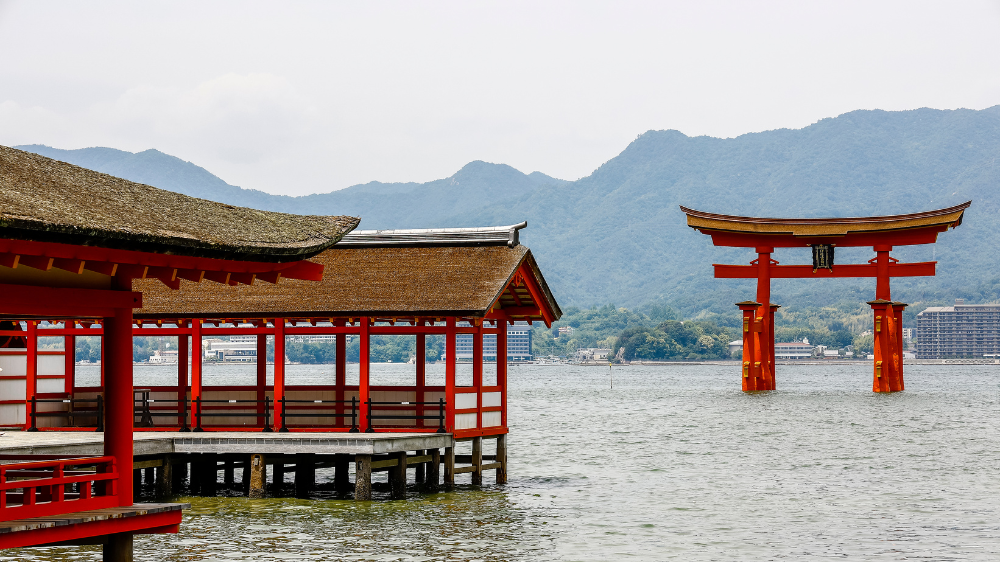 Itsukushima Shrine
Itsukushima ShrineItsukushima Shrine is one of Japan’s most renowned shrines, featuring a bold and innovative layout that uses the sea as its grounds and showcases the architectural style of the Heian period. The vermilion-lacquered buildings connected by corridors appear to float on the sea when the tide rises, creating a mystical harmony with nature.
History and Origin
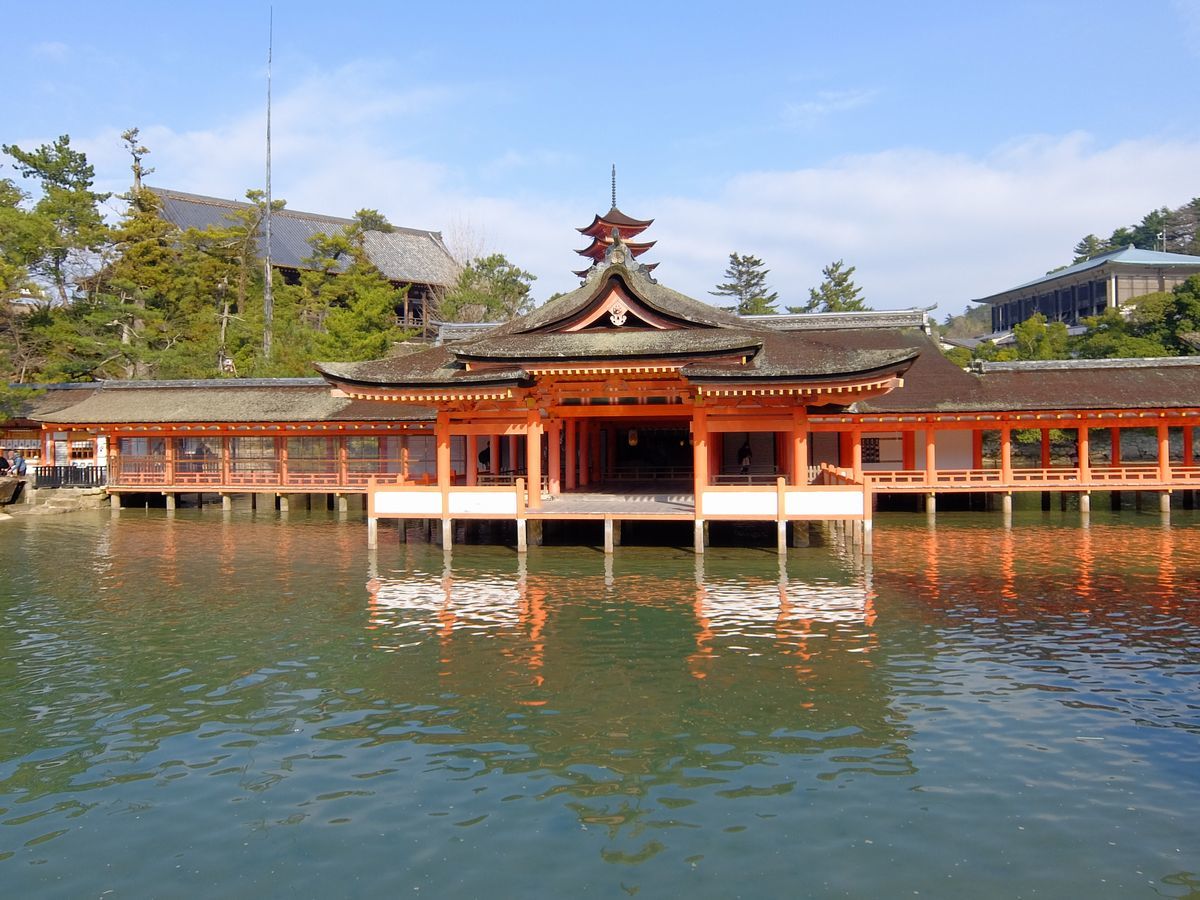 Itsukushima Shrine
Itsukushima ShrineItsukushima Shrine was founded in 593 and was expanded to its present grand scale by Taira no Kiyomori. The shrine, built on the sea, symbolizes the harmony between Shinto and nature in Japan. It enshrines the three Munakata goddesses, who are believed to provide blessings for safe sea voyages and prosperous business.
Highlights
- Corridors: The vermilion-lacquered corridors connecting the shrine buildings extend for about 300 meters, offering different views with the changing tides. At high tide, the shrine buildings appear to float on the sea, captivating visitors with their beauty.
- Great Torii Gate: The iconic Great Torii Gate of Itsukushima Shrine stands about 160 meters offshore from the main shrine building. It is 16.6 meters tall, with a roof length of 24.2 meters, a circumference of 9.9 meters around the main pillars, and a total weight of approximately 60 tons. It is the largest wooden torii gate in Japan and is designated as an Important Cultural Property. The torii appears to float at high tide, and at low tide, visitors can walk up close to it.
Other Attractions
- Noh Stage: Within the shrine precincts is a Noh stage where Shinto rituals and traditional performances are occasionally held. Surrounded by the beautiful scenery, watching Noh performances here is a unique experience.
- Treasure Hall: The Treasure Hall of Itsukushima Shrine displays valuable cultural artifacts and historical relics, offering visitors insight into the shrine’s rich history and significance.
Visiting Itsukushima Shrine allows one to experience traditional Japanese architecture, the beauty of nature, and a deep sense of history and spirituality. The entire island of Miyajima is considered sacred, providing a special and healing experience for all who visit.
Meiji Shrine
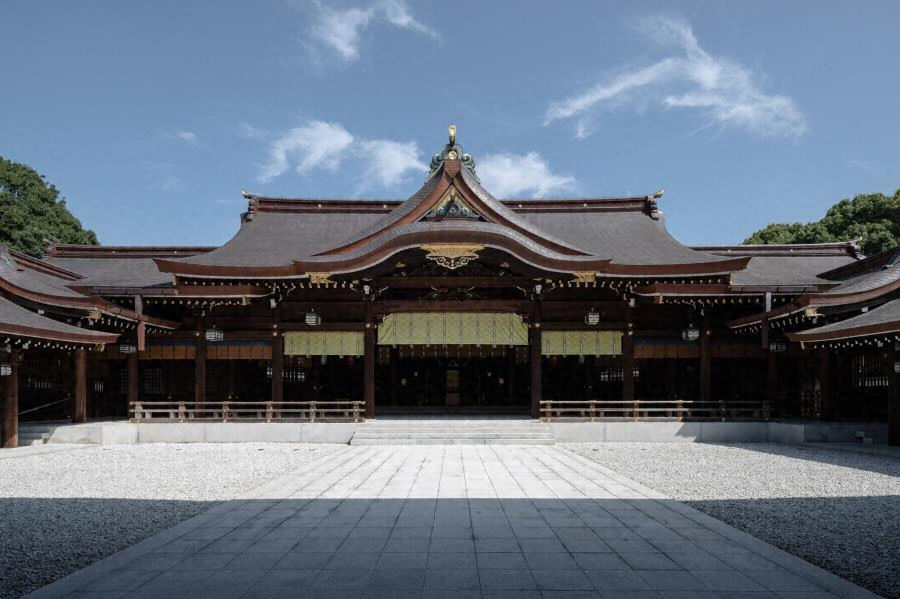 Meiji Shrine
Meiji ShrineMeiji Shrine is dedicated to Emperor Meiji and Empress Shoken. It consists of the serene and sacred Inner Garden and the Outer Garden, which includes the Meiji Memorial Picture Gallery and the Meiji Memorial Hall. The lush and verdant forest of the shrine was created by planting approximately 100,000 donated trees from all over Japan, forming an artificial forest that displays beautiful scenery throughout the seasons.
History and Origin
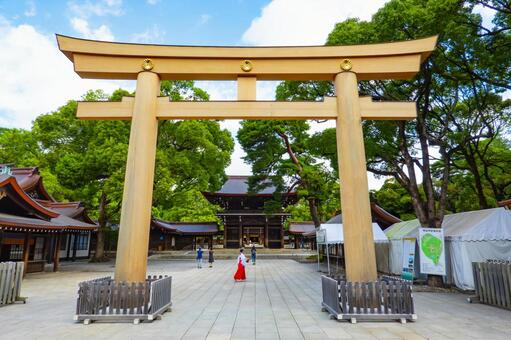 Meiji Shrine
Meiji ShrineMeiji Shrine was established in 1920 to honor Emperor Meiji, who achieved the Meiji Restoration, and Empress Shoken, who supported his reign. The shrine’s creation involved contributions and services from across Japan, with the forest being formed by the donation of trees from all over the country.
Highlights
- Inner Garden: The Inner Garden of Meiji Shrine offers visitors a sense of purity and tranquility. The expansive grounds include structures such as the Kaguraden and the Treasure Museum, where visitors can learn about the shrine’s history and culture.
- Outer Garden: The Outer Garden features the Meiji Memorial Picture Gallery, which displays paintings depicting Emperor Meiji’s life and the history of the Meiji era. The Meiji Memorial Hall hosts weddings and various events.
Other Attractions
- Meiji Shrine Torii Gate: One of the largest wooden torii gates in Japan, it stands at the entrance of the approach, welcoming visitors as an important landmark.
- Kiyomasa’s Well: A spring water well within the grounds of Meiji Shrine, popular as a power spot. The clear water of this well provides healing to those who visit.
Visiting Meiji Shrine offers a deep understanding of Japanese history and culture, as well as a peaceful moment in nature. Located in the heart of Tokyo, it is a special place where one can refresh away from the city’s hustle and bustle.


